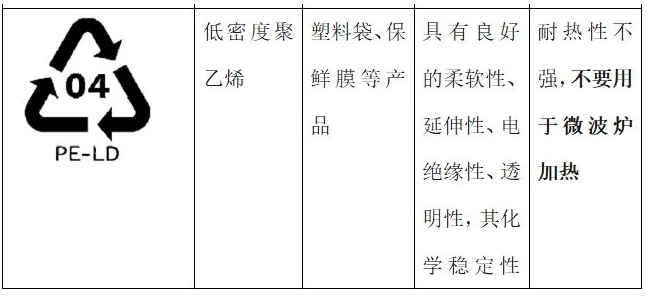Information Details
Which plastic bottles can be reused? Can they be put into microwave ovens? -- Popular Science on Plastic Products Purchase and Recycling Signs
Release time:
2023-10-08 15:28
All kinds of plastic products are familiar to us. As more and more enterprises consciously mark packaging recycling marks on their products, we are also more and more familiar with the small triangular marks on the bottom of the products or on the bottles. However, many misunderstandings have been brought about. For example, as long as we see these recycling marks, it means that the products are safe and can be used repeatedly, put into microwave oven for heating at will, etc, it has brought many health risks.
New Anrun Consulting made a summary according to the characteristics and application scenarios of plastic products, and made a warm reminder for each material.
According to the provisions of 4.3.1 of GB/T 18455-2002 packaging recycling mark, the plastic packaging recycling mark consists of basic figures, codes and abbreviations. See the following table for examples of commonly used plastic packaging recycling marks. The numbers in the figure are plastic codes, which are located in the center of the figure. The letters at the bottom of the figure are plastic abbreviations, and the abbreviations and codes are marked according to GB/T 16288.




To sum up:
Use less disposable plastic bags!
01 PET mineral water bottles, beverage bottles and so on, it is not recommended to recycle them at home, and sell them directly to the waste collection aunt after use!
02 Cleaning products and bath product bottles made of PE-HD materials are easy to age and are not easy to clean.
03 PVC material is too widely used, but it is not recommended to recycle food. The special use of common PVC food cling film requires special attention.
Food preservative film is divided into polyethylene (PE), polyvinyl chloride (PVC), polyvinylidene chloride (PVDC) and other types according to the material. PVC is widely used in food and vegetable packaging, and its potential harm to the human body mainly comes from two aspects. One is the residual amount of vinyl chloride monomer in the product. If people are exposed to excessive vinyl chloride, it will have an impact on human health; the other is the type and content of processing aids used in the processing process. In the Announcement on Strengthening the Supervision of Food Preservative Film issued by the General Administration of Quality Supervision, Inspection and Quarantine in 2005, it clearly pointed out that if consumers use PVC food preservative film, it should not be directly used for packaging meat, cooked food and fat food, nor should it be directly heated in a microwave oven.
04 PE-LD plastic wrap, plastic bags, etc. are not resistant to high temperature. If the breakfast shop owner directly heats the food packed in PE plastic bags in the microwave oven for convenience, you should stop it in time.
05 PP material fresh-keeping box, etc., finally have a safe can be put into the microwave oven heating, and can be reused after cleaning plastic products! But some microwave oven boxes, the box body is made of PP plastic, but the lid is different from other materials, so you should see it clearly when you buy and use it.
The above list is only a small part of the common plastic materials, there are many such as PS material fast food boxes, baby bottles, etc., many socially responsible enterprises have promised that their packaging products can achieve 100 reusable or recyclable. For yourself and your family, pick up the plastic products you have at hand when you are free and look at the number at the bottom.
Background Introduction
Most of the goods we buy daily contain exquisite packaging, but in the later stage of packaging, the treatment process of packaging waste is very unfriendly to the environment and human beings. With the improvement of environmental awareness, the world is taking some corresponding measures for packaging waste treatment, and one of the working links is to classify and deal with the identification marks of materials.
The newly revised GB/T 18455-2022 "Packaging Recycling Mark" has been officially implemented since February 1, 2023. GB/T 18455-2022 focuses on the production, use and recycling requirements of commonly used packaging materials such as paper, plastic, metal, glass and composite materials. Combined with the characteristics of different materials, it stipulates the types, basic graphics and labeling requirements of recycling marks, and specifies the size, position, color and labeling methods of marks in detail.








